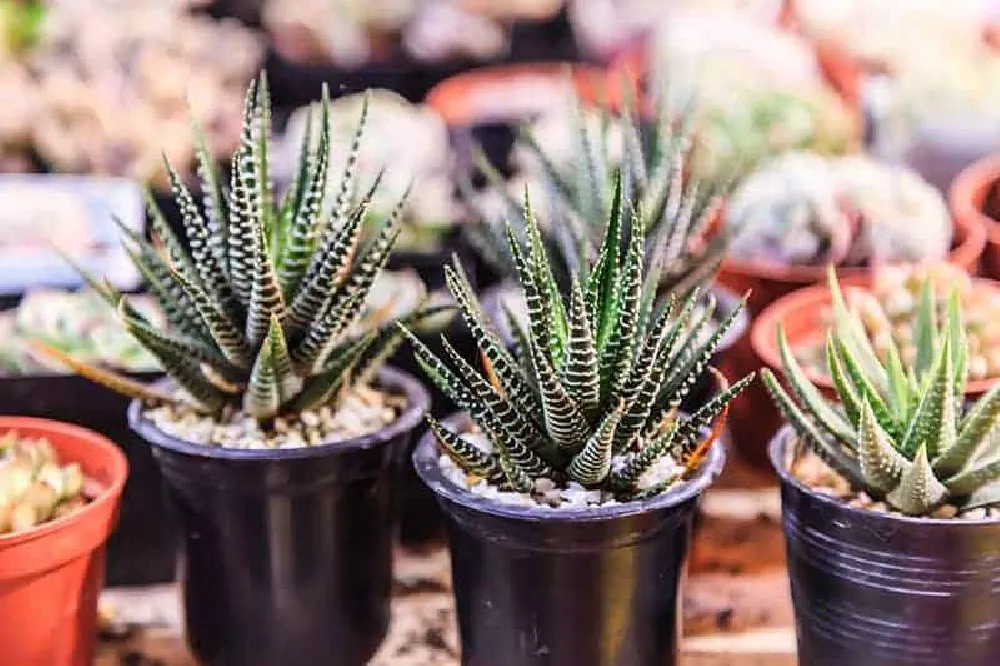- Home >
- Houseplants >
- Zebra Plants
Zebra Plants for Sale
Enter your zip code to find nearby stores that may carry this plant.
Zebra plant is a tropical plant with striking leaves and large, colorful flowers. Not to be confused with Calathea zebrina, which shares the same common name, the zebra plant we are discussing bears the botanical name Aphelandra squarrosa. This zebra plant is a tropical species that loves humidity. If you do not live in a tropical area, you can still admire the leaves and flowers of this plant as it grows in an indoor container setting.
- Outstanding foliage that will stand out compared to most other plants in your garden.
- Relatively easy to propagate through stem cuttings.
- Flowers appear in summer and are as impressive as the leaves.
Zebra Plant Varieties
Planting instructions
Zebra plants grow naturally in zones ten and eleven, so most gardeners will need to grow this plant indoors. When choosing an indoor location, select an area that receives a few hours of sunlight or bright but indirect light. Direct sunlight is especially harmful to this plant during the hottest times of the year.
Zebra plants need a lot of humidity to put forth their best growth. To accommodate this need, you might need to bring a humidifier into the room where your zebra plant grows. You can also use a spray bottle to create a similar effect.
Watering and nutrients
While you do not want the soil to be too dry, you do not want it to be excessively moist. One way to achieve this ideal level of moisture is to water every few weeks. When you do, make sure you soak the soil entirely with warm water.
You can fertilize a zebra plant as often as you water it. Fertilizing regularly will encourage the plant to have a more profuse bloom. The ideal fertilizer mix has equal amounts of primary plant nutrients. Regarding soil acidity for a zebra plant, a neutral or slightly acidic pH works well.
Pruning
The best time to prune a zebra plant is in the late summer and fall. The plant’s flowers dying is your signal to prune it.
After the flowers are spent, remove them promptly. This will encourage the plant to have an improved bloom in the following season. You can also use this time as an opportunity to cut back the leaves and stems. This prompts your zebra plant to be dense and vigorous, rather than leggy.
Pests, diseases, and animals
There are a few common issues you will need to look out for while caring for a zebra plant. This species can have problems with aphids, spider mites, mealybugs, and several other pests.
Diseases can also occur in a zebra plant. Since zebra plants require a moist environment with plenty of humidity, they are susceptible to fungus and leaf spots. An incorrect amount of water can also cause the leaves of this plant to wilt.
Achieving maximum results
Zebra plants play a purely ornamental role in the garden. You should do all you can to maximize the plant’s beauty. Ensuring an air temperature around 70 degrees Fahrenheit, maintaining humidity, and keeping the soil moist will allow the foliage to look its best.
If you wish to promote the best blooms for this plant, make sure you are using diluted fertilizer regularly. You should also take care while handling this plant. While it is not toxic, zebra plants can irritate your skin.
FAQs
Is there more than one kind of zebra plant?
As you shop for zebra plants, you will find multiple varieties to choose from. The two most prominent examples of what gardeners refer to as zebra plants are Calathea zebrina and Aphelandra squarrosa. While these plants share the same common name, they are entirely different species. That is why it is important to know which species you are dealing with before you decide which zebra plant is right for you.
How long do zebra plants live?
The variety of zebra plant called Aphelandra squarrosa is a relatively short-lived plant. Even if you give your zebra plant the proper care and maintenance, its lifespan will last just a few years. If you wish to enjoy your zebra plant for longer, you can propagate a new, younger version of the plant. The propagation process for this species is straightforward.
How do you propagate a zebra plant?
You can easily propagate a zebra plant by cutting a stem from a mature plant. Cut a stem that is about three inches long. Then apply a root growth hormone to the cut end. Plant the cutting in a pot that has moist soil and good drainage. Simply follow the same care routine you would use for a mature zebra plant. After about one month or more, your cutting will develop healthy roots.
How can you make a zebra plant bloom?
If you want to promote the best blooms for your zebra plant, you should practice a regular fertilization routine. Fertilizing once a week or once every two weeks is likely to bring you success. When you see the flower buds form, it can help to move the plant to a brighter area. But in that location, you will need to supply more water than usual.








